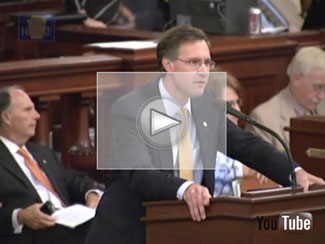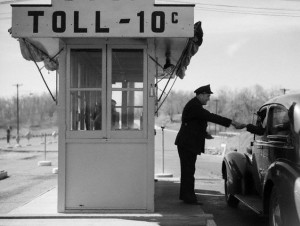I was surprised by this headline in the Daily Local, ‘State to consider new Downingtown train station’ – What? How about helping the Ardmore Transit Center project or our own Paoli Transportation Center?
According to the article, Bob Garrett, representative from the PA Dept of Transportation presented information to the Downingtown Borough Council that a state-funded study ($200K) will get underway shortly to look for a new site for their train station. What’s wrong with their current train station?
This makes no sense to me for several reasons. First off, how is it possible that less than 2 weeks since passing the state budget, (with major cuts to education and human services) there is money to move the location of Downingtown train station? I researched the current train station in Downingtown and discovered the station is less than 20 years old! The 19th century train station in Downingtown burned down in the early 1990s and was rebuilt sometime prior to 2000. So why does the state think that Downingtown needs a new station and a new location? Apparently, the current station needs more parking and the renovation of the present platform will not allow for sufficient handicap accessibility.
I checked and the Downingtown train station has 213 parking spaces. I believe that like Paoli, Downingtown serves as both a SEPTA and Amtrak station. However, unlike Paoli, only select trains on the Paoli/Thorndale (R5) actually go to the Downingtown train station. The daily passenger traffic at Paoli train station is almost 3 times that of the Downingtown train station. According to a FY2010 Amtrak fact sheet, Paoli daily traffic is 155,000 passengers versus 59,000 passengers at Downingtown train station. Based on the level of passenger traffic, additional parking needs, building improvement, etc. why is the focus not on the Paoli Transportation Center but on moving the location of the Downingtown train station. The redevelopment plans for the Paoli Transportation Center have been in the works for years, whereas the Downingtown train station project appears to be the new kid on the block.
According to Garrett, the state wants to improve the train stations from Philadelphia to Harrisburg in hopes of increasing ridership. This expensive study is to decide where in Downingtown to put the new train station. As an aside, I found it interesting that the Dept of Transportation is without a ‘plan’ of what to do with the old Downingtown train station property once they move the location and build a new station.
My question to the Dept of Transportation is why not finish the train station projects already underway before starting a new one . . . like the Ardmore Transit Center and our own Paoli Transportation Center? When asked how much this project would cost, Garrett was not sure but a renovation at the Elizabethtown train station was $12.5 million. Garrett offered that the state would help with the funding of the train station project in Downingtown.
Online I found a ‘Transportation Funding Crisis’ document which lists the public transportation projects for Pennsylvania Department of Transportation District-6 which includes Philadelphia, Chester, Bucks, Delaware and Montgomery counties. The comprehensive list of transportation projects includes Ardmore and Paoli transportation centers, but no listing whatsoever for the Downingtown train station project. To be fair, there is no date on the Dept. of Transportation document so it may be a year or two old. We know that the state has a finite amount of money for transportation projects, so why add a new project when there is an established list of train station projects already approved? Should there not be a priority to state funding for existing projects?
I would like an update on the Paoli Transportation Center . . . it seems as if the project is in limbo. Where exactly does the project stand? If the answer is, there is ‘no money’, than I think we need to contact Bob Garrett at the PA Department of Transportation office. Obviously if the state is willing to fund the purchase of property and the building of a new train station in Downingtown, that has one-third the level of daily traffic as the Paoli train station, this community is missing out!
What about Paoli Transportation Center — why can’t we get help? Who to contact — Township supervisors . . . State Rep Kampf . . . Senator Dinniman?
————————————————————————-
I want to mention an op-ed article written by Chester County Commissioner Ryan Costello titled, ‘We Must Address Transportation Needs’. As Costello says, “We cannot continue to turn a blind eye to the inevitable and ignore the fact that our aging infrastructure is in desperate need of repair and enhancements . . . “
Federal assistance is no longer available for the state’s critical infrastructure needs; help needs to come from Harrisburg.

